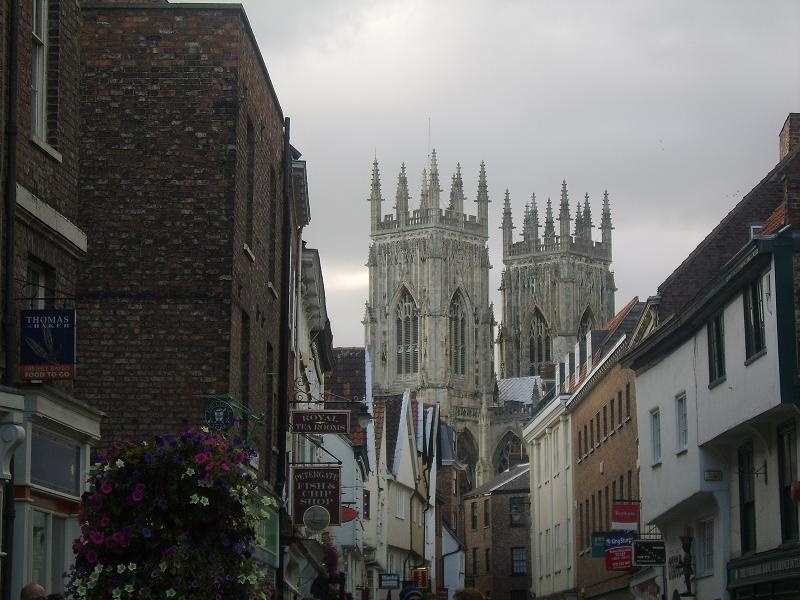
York Minster - Image by PicturesOfEngland.com member Mick Covell (view gallery)
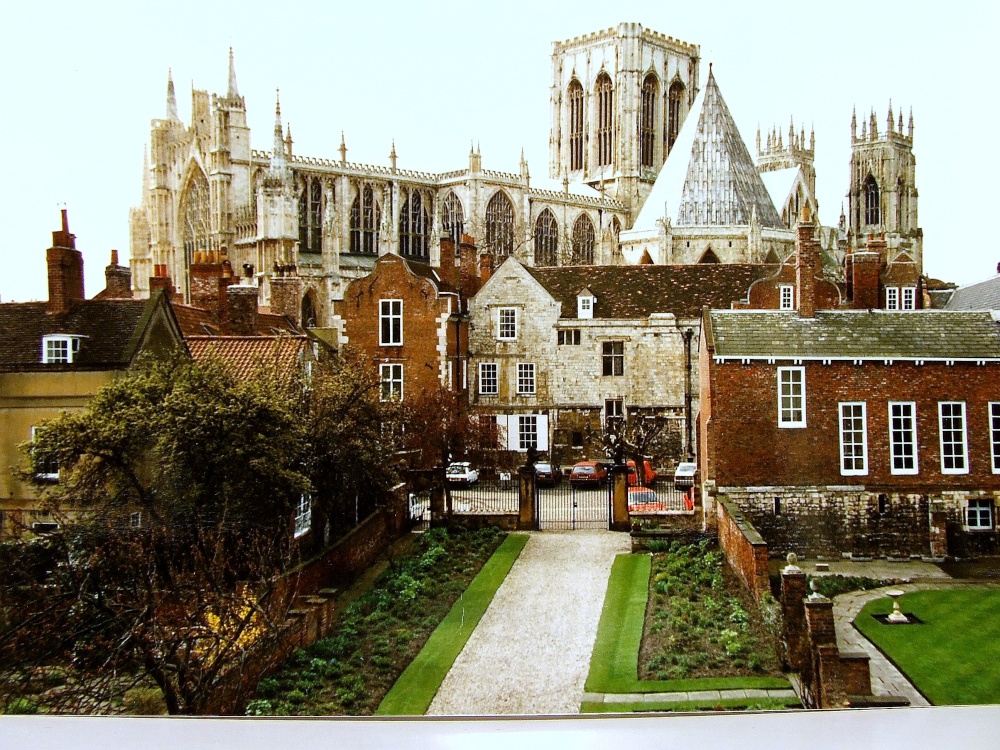
York Minster - Image by PicturesOfEngland.com member Thomas Crossley (view gallery)
This is one of the most magnificent cathedral's in Europe, if not the world. It's sheer size and beauty leaves the visitor breathless with wonder at the might and majesty of this centuries old building, and the overwhelmingly beautiful treasures within which include more than 100 stained glass windows spanning a period of over 900 years.
The Minster stands on the site of a former wooden church of Saxon times. The present building, seemingly dominating the whole of York, was started by Archbishop Walter de Grey, early in the 13th century. The great church measures 524 feet long and around 249 feet wide across the transepts. Its massive central tower, rising to 234 feet was finally completed 250 years after building began. The stone exterior of the church is awesome, and inside at every turn something fresh and magical greets the eye. Entering through the nave's west door, the second window on the left contains glass that is thought to be some of the oldest in England, possibly dating from around 1150, and you can only gaze in wonder at the stark beauty of the stone choir screen carved with England's ruling monarch's from the time of William I to Henry VI.
In the late 1960's a serious weakness was detected at the base of the 20,000 ton central tower. During the restoration project a rich variance of archaeological treasure was discovered, these included carved Saxon stones and Roman walls. The Minster's Undercroft forms perhaps the most fascinating part of anyone's visit to the church for it is used as a museum telling in full the remarkable story of the whole of York Minster's history.
One of the most delightful things about York Minster is that despite the daily constant stream of visitors flowing through its doors and the commercialism brought about by modernity, the Minster in all its grandeur still manages to possess a blessed serenity leaving you in no doubt that at the core of the building beats the heart of a church dedicated to the glory and worship of God.
York Minster is an uplifting experience and an essential part of any visit to the City of York.
ID#150
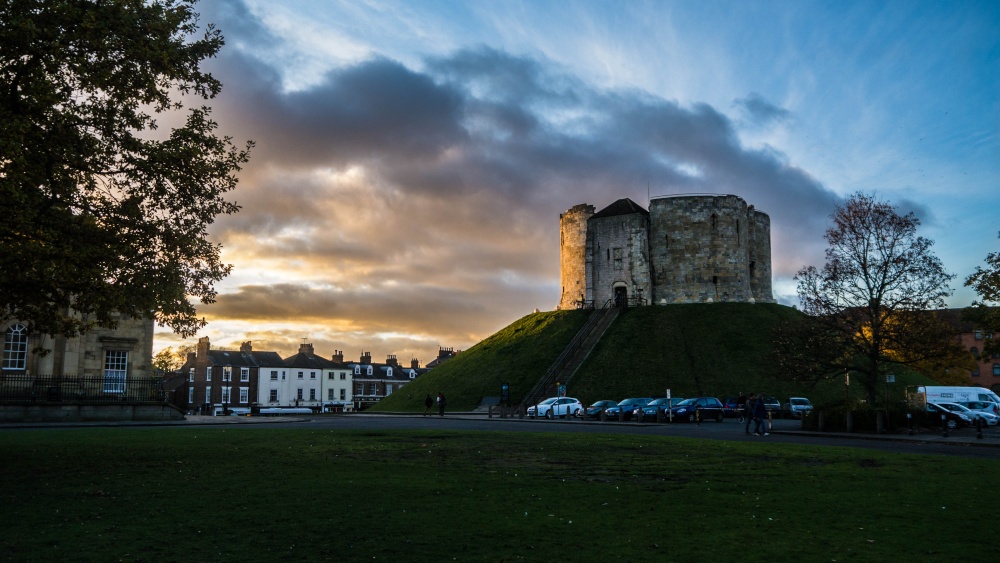
Clifford's Tower Sunset - Image by PicturesOfEngland.com member Matthew Moss (view gallery)
Apart from York City's lovely old Minster church, there is little in the town to rival the sheer drama of Clifford's Tower in its lofty hilltop setting, casting from its ramparts unrivalled views over York.
Following William the Conqueror's invasion of England, he sought to overthrow the North, so he built a castle here in 1086. This was later burned by rebel forces and a new wooden fortress was built. It is this that was to witness one of the most heinous crimes in York's proud history and a Memorial Tablet on Clifford's Tower commemorates this most horrific event of the year 1190.
A huge, out of control mob rioted against York's Jewish citizens, of these 150 managed to seek sanctuary inside the castle, but the relentless mob, ever thirsty to spill more blood turned towards the castle. Many of the Jews committed suicide rather than be captured, but the remainder died when the mob set fire to the building. Those unfortunates who did try to escape were slaughtered.
In the 13th century a new building was put up, this later blew down and in 1270 Henry III ordered a stone castle to be built. It was here that Roger de Clifford was executed in 1322 for treason against Edward II. In the barbaric manner of the times, he was hung in chains from the walls of the tower. Thus, ever since the tower has been styled "Clifford's Tower".
It was not until the 17th century that the tower lost its roof through fire and today it still remains open to the elements with walks around the 13th century walls.
Apart from the tower there is a Female Prison, Debtors Prison and Assize Court to be seen, these were additions of the 17th century and together with the dungeons give the lower part of the tower a very eyrie feel. The climb to the top is via around 100 steps, but once mastered, however breathless, the view is a rich reward.
ID#4795
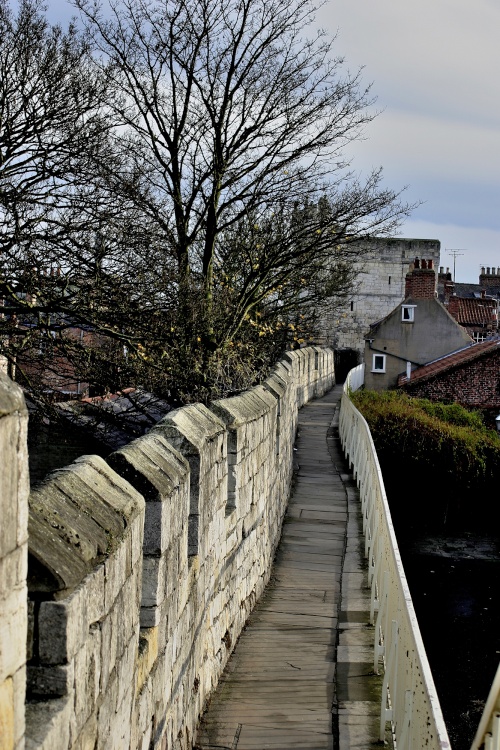
City Walls, York - Image by PicturesOfEngland.com member Tom Curtis (view gallery)
York City Walls are the longest and most complete city walls in England, stretching for 2 miles around the city. First established in 71 AD by the Romans to protect a fort and legion, the Roman walls were eventually replaced by walls erected by the invading Danish Vikings, who covered the roman walls in earth and placed a wooden palisade on top (long wooden stakes). These were then replaced during the 13th and 14th centuries with the stunning medieval stone walls that we see today. To enter the medieval city of York people used to have to pass through huge defensive gateways known as 'bars' (which means 'gate') and four of these incredible structures remain today - Monk Bar, Bootham Bar, Walmgate Bar, and Micklegate Bar.The walls are free to walk around (and on) though you may want one of the guided tours to get the most out of your visit, however there are plenty of information plaques along the walls if you decide to walk them alone.
More pictures of York City Walls including the Bars, click here.
ID#161
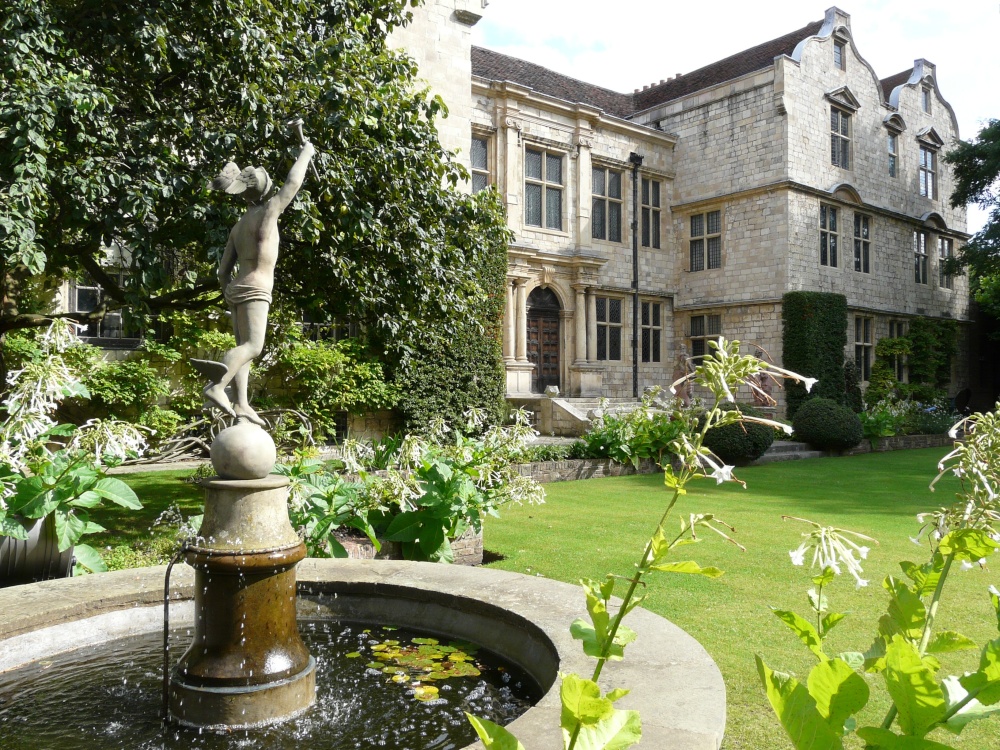
Treasurer's House - Image by PicturesOfEngland.com member Stephen (view gallery)
Just behind York Minster is the Treasurer's House. Built in 1419 it was home for York Minster's Treasurer, who was the controller of the finances of the Minster, and as such required a grand home to entertain important guests to the city. It is a beautiful house with fine medieval and Georgian furnishings and fine gardens. Entrance to the property is free to National Trust members, or a small admission fee.
ID#161
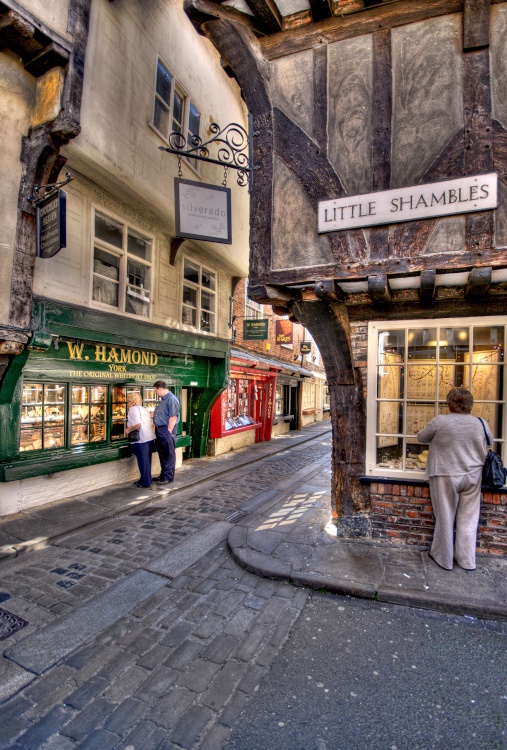
The Shambles - Image by PicturesOfEngland.com member Sarah Dawson (view gallery)
One of, if not, the best-preserved medieval shopping street in Europe, taking a stroll down the Shambles in York is truly like stepping back in time with its narrow cobbled street and overhanging timber-framed buildings and shops, you really can imagine yourself back in medieval times and it is an experience to behold. Check out the photo tour of the Shambles and you'll begin to understand why this is a must-see historic attraction in York.
ID#161
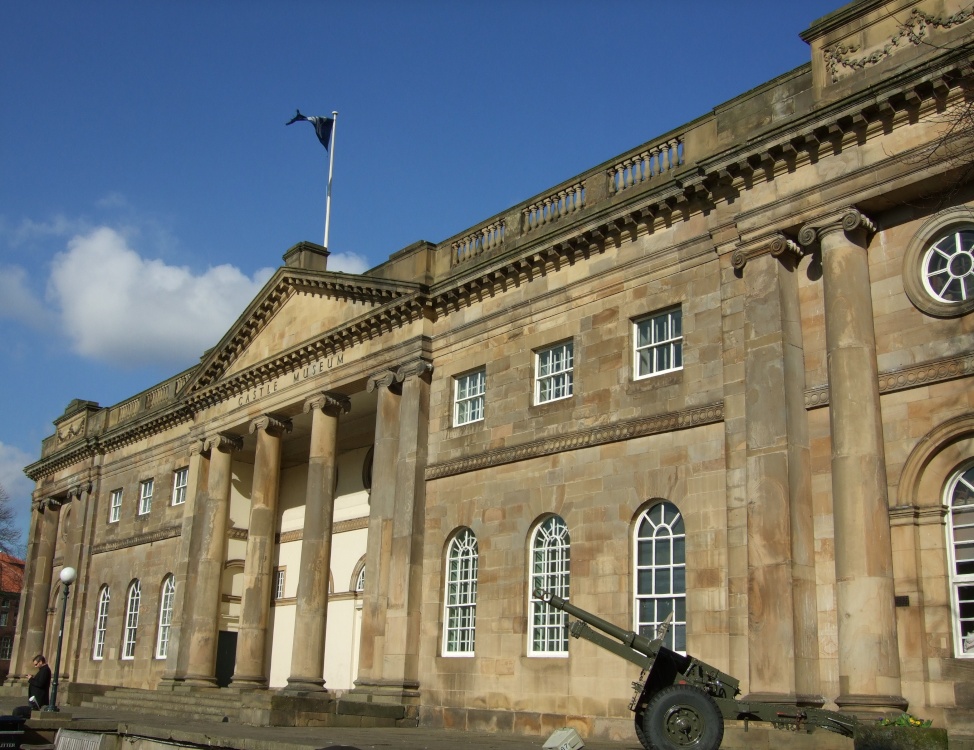
The Castle Museum. York - Image by PicturesOfEngland.com member Marilyn Harris (view gallery)
This fascinating museum offers a lively and interesting day out for every member of the family. The museum is housed in an atmospheric prison building from the 18th-century, which is now Grade I listed and is ideal as a back-drop for the imaginative settings and life-size reconstructions of street scenes from the past.
In this wonderful place you can really soak up the atmosphere of Victorian Kirkgate, you can feel the cosiness of a Victorian home, peer into shop windows and sample what it was like to visit a Victorian police station! Half Moon Court offers a brilliant reconstruction of daily life in York during the Edwardian era.
Other displays include the Jane Austen costume collection, and you can even visit the cell where the famous highway man Dick Turpin spent his last night before facing the executioner. There are valuable insights into the town's social history and a rich display of Yorkshire crafts, patchwork quilts, military exhibits and toys. The museum takes you back over hundreds of years and finally transports you to the trials and tribulations of the citizens of York during the days of World War II.
The opportunities to enjoy, learn and discover are limitless and should you be visiting this beautiful City then a visit to York Castle Museum is not to be missed.
ID#10534
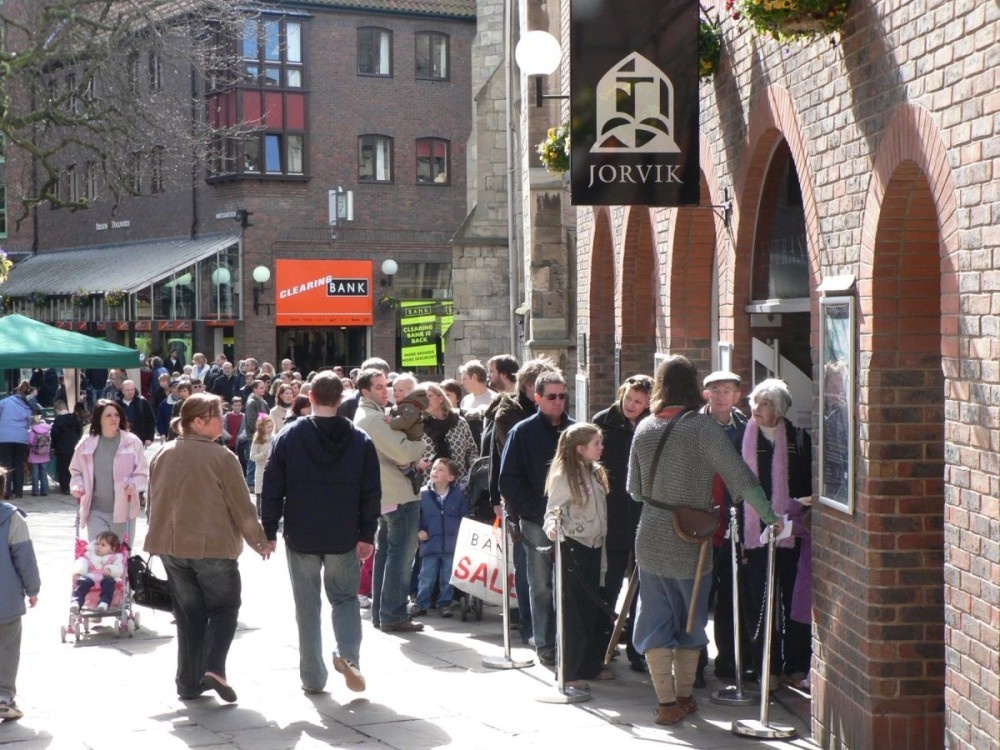
The queue at 11.45 for the Jorvik Viking Centre, York. Get there early ! - Image by PicturesOfEngland.com member Stephen (view gallery)
Here in a very modern building at the heart of one of the countries most beautiful and historic cities is an award-winning museum celebrating York's strong Viking heritage. The museum perfectly reveals to the visitor just what daily life was like under Viking rule in the 10th century.
The site of the museum is well chosen, it stands on an excavated site where well preserved remains of Viking York were discovered encased in mud, thus the meaning of the museum is all the more realistic and evocative of the times. It has all the excitement of scenes, smells and sights of long ago.
Visitors are taken on a magical journey through a series of rich tableaux depicting shops, streets, markets, homes, even down to the food the Viking's ate and how it was prepared. You can see and examine Viking costume, even strike your own coin from copies of coin dyes found when the site was uncovered.
The centre has an exhibition telling how the site was discovered, and how scientists put the jigsaw of the past together for the benefit of future generations to come.
This is an atmospheric place with much to see and learn about. Its appeal is wide and varied for there is much here for people of all age groups. The Jorvik Viking Centre usually opens it doors to a "flurry" of visitors with queues lasting for most of the day. It is one of York's foremost tourist attractions which no visitor should miss.
ID#10605
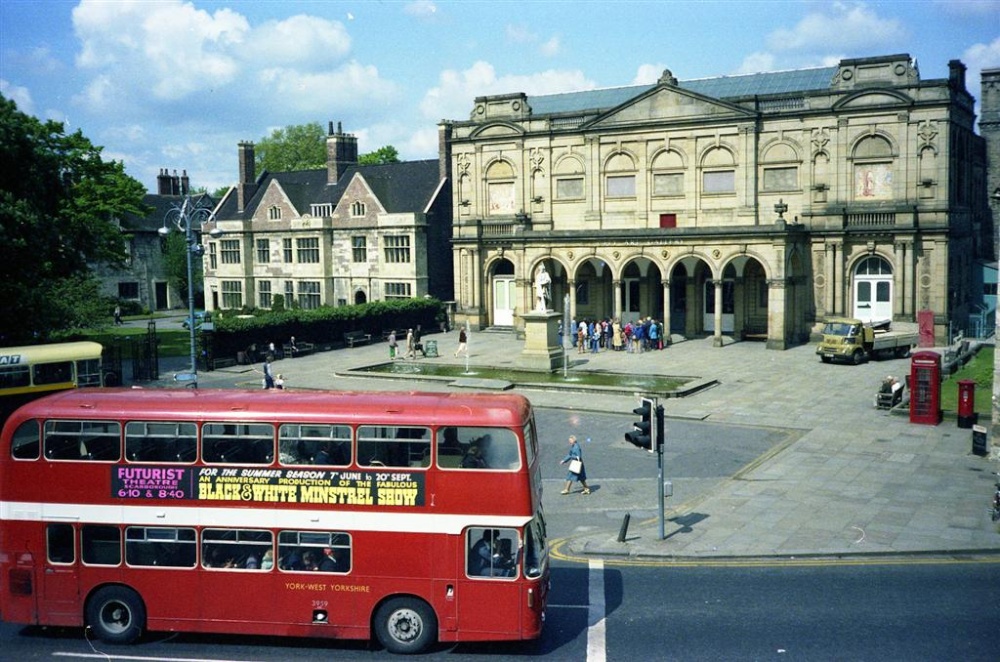
York Guildhall and Red Double-Decker Bus - Image by PicturesOfEngland.com member Robert Hanley (view gallery)
The wonderful medieval Guildhall in York has a colourful history and dates from the 15th century, though it stands on the site of an earlier 13th century building.
The Guildhall was built in 1445 for the 'Guild of St Christopher and the Corporation of the City of York, as a meeting place, however over the centuries the Guild Hall has had various uses, such as being used as a Court of Justice, which inluded for the infamous trial of Margaret Clitherow for practising Cathlocism in 1586. She was eventually sentenced to death by crushing.
During WW2 the hall was hit by German bombs during the Baedeker Raid of 1942 and it was 18 years befor it was fully restored and re-opened by Queen Elizabeth, the Queen Mother on 21st June 1960
ID#11177
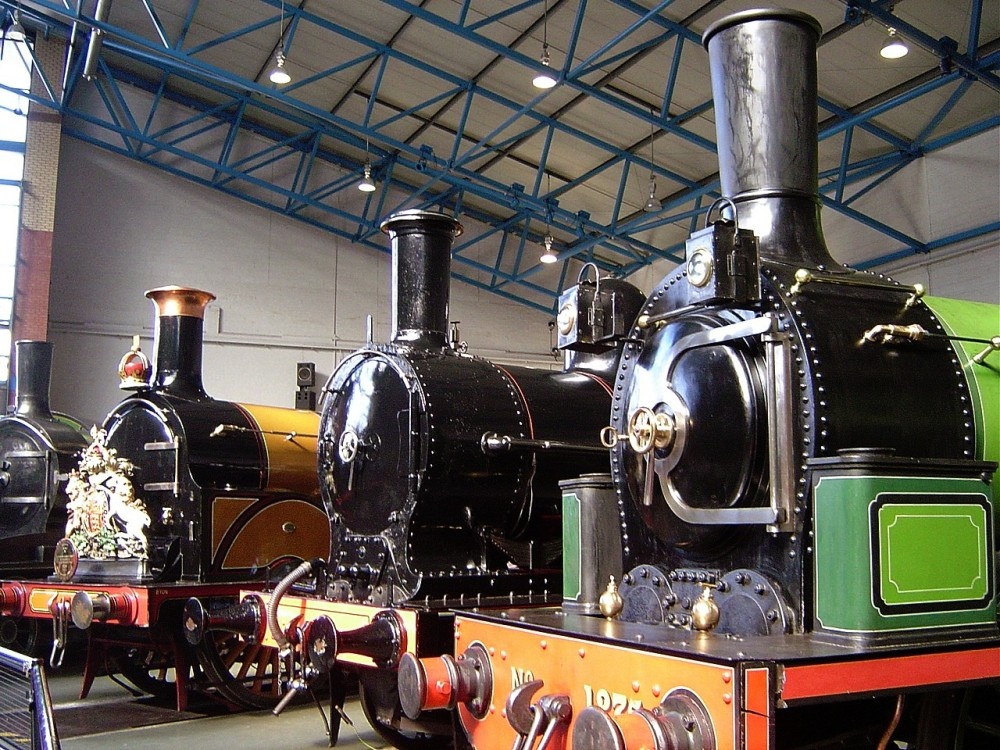
On the turntable at the National Railway Museum, York - Image by PicturesOfEngland.com member Grant Shaw (view gallery)
The City of York is where you will find the largest national railway museum in the world. It is full of railway memorabilia, remarkable archive material and gleaming engines from the romantic age of steam, with engines dating as far back as 1829.
The National Railway Museum has been built up over a period of years since 1948 when British Rail began inheriting railway stock of previous railway companies. With the closure of so many rail lines expansion of the museum became quite rapid in the period between 1960 and 1975, the museum has all of British Rail's collection and the entire exhibition covers three large exhibition halls.
Memorabilia to be seen is wide and diverse, it ranges from the 1938 Mallard, holder of the record as the fastest ever steam locomotive, to earlier engines and a dining car of 1913 and there is even an interesting Japanese Bullet Train. These can be seen in The Great Hall along with a replica of Eurostar's nose cone set in a ring depicting the channel tunnel.
Historic locomotives can be viewed on a giant turntable, this demonstration takes place twice daily, thus giving a "birds eye view" of 170 year old winding engines.
Visitors can also enjoy a re-created period railway station with evocative sights and sounds. Here, in Station Hall the exhibits include a variety of carriages, wagons, sleeping compartments and dining cars.
One of the most delightful of all the exhibits is the carriages from the Royal Train. These cover the period from 1840 to 1940 and demonstrate the style and luxury in which Royalty travelled, with bedroom, dining room and saloon carriages.
There are displays on railway safety, this explains signals and computer communications systems. You can even see the computer system that controls York's present day railway movement.
Another section covers restoration and renovation, visitors are invited to see whatever work is on-going with the restoration of a wide range of museum items.
In another part of the museum you can learn about Women at Work on the railways, take a look at mail carriages and find out just how the mail was sorted in the past, and present. You can further explore freight and passenger services.
Included in the thousands of items to be seen are railway clocks, gold and silver travel passes, the bullion box involved in the Great Train Robbery of 1855. There is all of this and so much more, from interesting mechanical models, to service medals, humble buttons, with documents, paintings and prints being available in the library archive by prior appointment.
Not in any other place in the world can you find a museum documenting the heritage of rail travel in such fine detail. The National Railway Museum is an exciting, fascinating experience, not just for the railway enthusiasts, but for everyone - regardless of age.
ID#4790
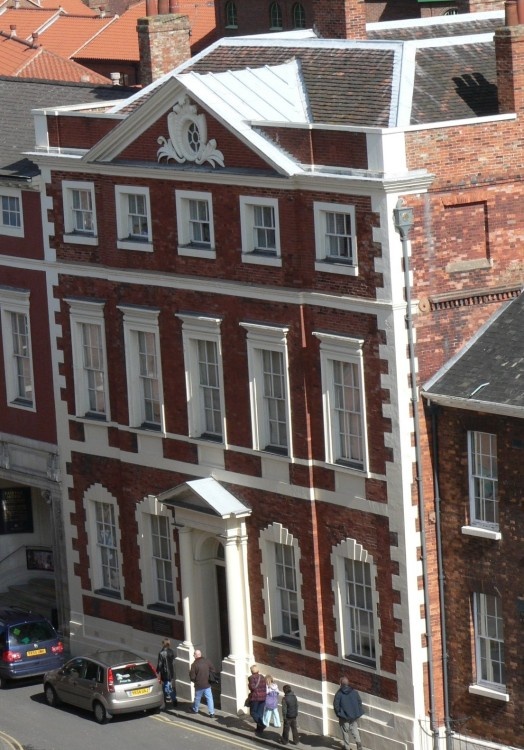
Fairfax House from Clifford's Tower, York - Image by PicturesOfEngland.com member Stephen (view gallery)
They say first impressions count and they do, for looking at the beautiful facade of Fairfax House, designed by John Carr, noted York architect of the 18th century, you immediately know that the interior is going to be equally special.
The house epitomises the very best of mid 18th century rococo style and decoration. It presently enjoys a reputation as one of the finest Town House's in Britain and makes a marvellous backdrop for what is now York's premier museum.
Fairfax House is famous for its winter showing of its unique "Keeping of Christmas" exhibition, this depicts the true delight of an 18th century Christmas. The exhibition draws attention from miles around and runs from early December to January 6th.
This is also the home of the famous Noel Terry collection of 18th century English furniture and clocks.
With other exhibitions throughout the year, this is a place not to be missed. It is a wonderful building full of the timeless charm of the 18th century, it is fortunate indeed that it was saved for the enjoyment of future generations by York's Civic Trust.
ID#10590
| Article Title | Author | Date |
| The Prettiest Streets in England | poe | 24th November 2020 |
| 10 of the best villages to visit in the Peak District, England | poe | 28th July 2020 |
| A look at some of the most famous views in England... | poe | 16th May 2020 |
| THE TRIAL OF THE PYX | Paul V. A. Johnson | 19th August 2019 |
| The Best Sandy Beaches in Dorset | poe | 7th June 2016 |
| 20 Of The Best Market Towns In England | poe | 1st June 2016 |
| A Human Heart and a Ghost Story in a Northamptonshire Church | Charles Moorhen | 30th October 2009 |
| Exploring the English Village Churchyard | Charles Moorhen | 29th October 2009 |
| Local Legends - The Basingstoke Burial | poe | 28th February 2008 |
| The Hidden Churches of Somerset | Louise Simmons | 6th February 2008 |